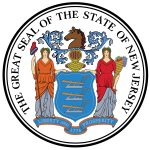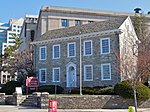Golden Swan-True American
1861 establishments in New JerseyBuildings and structures completed in 1861Buildings and structures in Trenton, New JerseyCommercial buildings on the National Register of Historic Places in New JerseyNational Register of Historic Places in Trenton, New Jersey ... and 4 more
New Jersey Register of Historic PlacesNew Jersey Registered Historic Place stubsTrenton, New Jersey stubsUse mdy dates from August 2023

Golden Swan-True American, also known as the Caola Building, is located in Trenton, Mercer County, New Jersey, United States. The building was built in 1861 and was added to the National Register of Historic Places on April 30, 2008.
Excerpt from the Wikipedia article Golden Swan-True American (License: CC BY-SA 3.0, Authors, Images).Golden Swan-True American
South Warren Street, Trenton
Geographical coordinates (GPS) Address Nearby Places Show on map
Geographical coordinates (GPS)
| Latitude | Longitude |
|---|---|
| N 40.2192 ° | E -74.766011111111 ° |
Address
Starbucks
South Warren Street 102
08608 Trenton
New Jersey, United States
Open on Google Maps








